01/15/2025
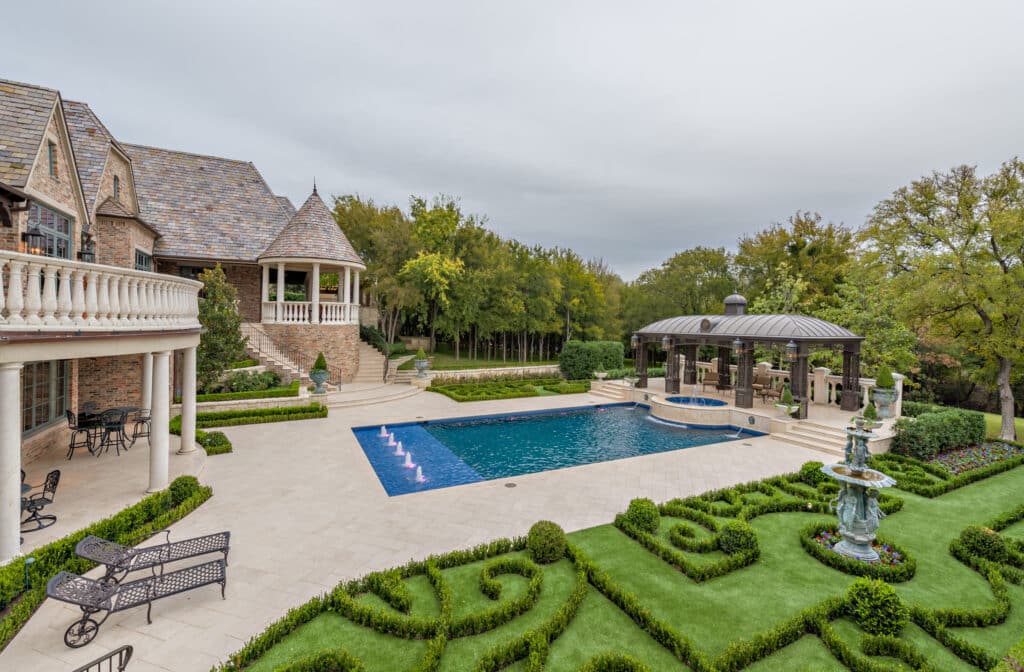
The classic garden design captures a timeless charm that transforms outdoor spaces into serene, elegant havens. With its structured layouts, balanced symmetry, and use of traditional materials, the classic garden design combines beauty and harmony, creating an ambiance that feels both refined and welcoming.
From formal flower beds and graceful pathways to captivating focal points like fountains and sculptures, each element adds sophistication to the landscape. Each feature from ornamental gates to lush, pergola-covered walkways adds layers of luxury and artistry, elevating outdoor spaces with a sense of enduring beauty and grace.
Classic Garden Design: Key Features
Classic garden design brings together symmetry, structure, and beauty to create luxurious outdoor spaces that stand the test of time. From structured layouts to charming traditional elements, each feature combines to transform a garden into a refined, serene retreat.
Here are the key elements that make classic garden design truly exceptional.
Symmetry and Balance
In classic garden design, symmetry and balance are the cornerstones. Gardens with symmetrical layouts feel ordered and harmonious, offering a sense of tranquility that invites visitors to pause and appreciate the surroundings.
This balance can be achieved with paired trees, twin fountains, or even mirrored pathways, creating a visually soothing environment. By placing matching elements at strategic points, your garden transforms into a realm of elegance and calm.
Traditional Outdoor Structures
Elements like pergolas, gazebos, and arbors are quintessential to a classic garden, providing structure and visual interest. Not only do they offer shade and seating, but they also serve as striking focal points.
Traditionally, these structures are crafted from materials like wrought iron or wood, enhancing the garden’s timeless appeal and inviting visitors to linger and enjoy the beauty of their surroundings.
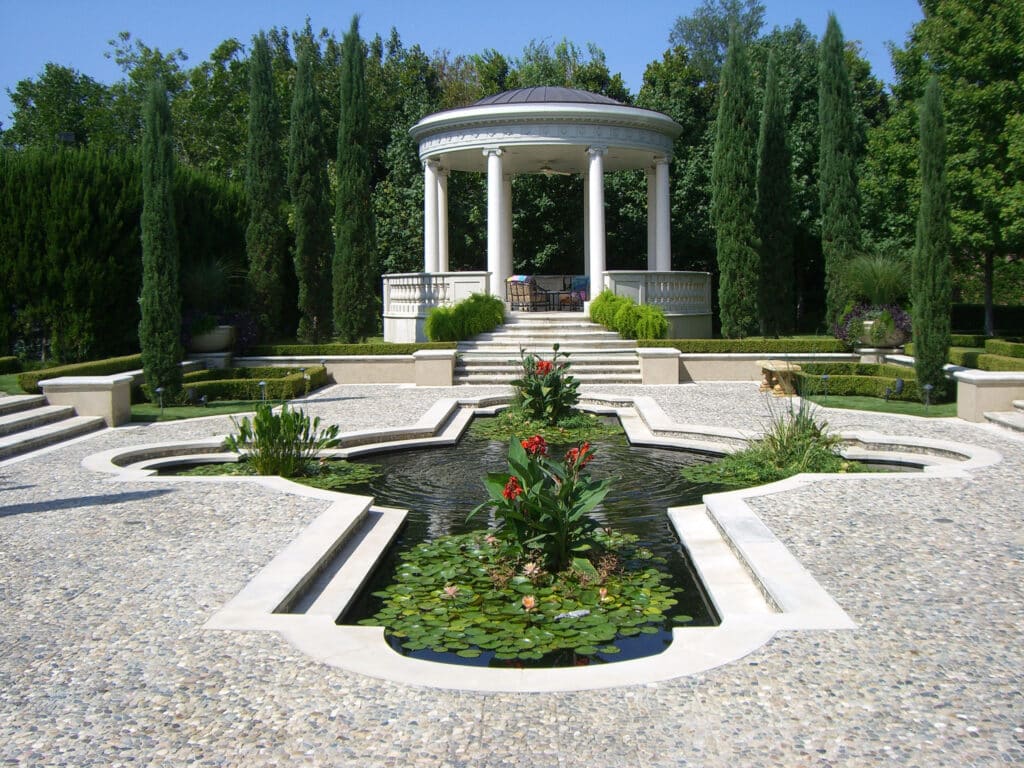
Paths and Borders
Defined paths and borders guide guests through the garden, adding both structure and visual appeal. Common materials for classic pathways include gravel, brick, and stone, which are not only durable but add texture and charm to the landscape. These formal walkways help organize the garden’s flow, leading visitors effortlessly from one beautiful spot to the next.
Focal Points
Focal points draw the eye, adding depth and interest to any garden. Classic options include statues, fountains, or carefully placed sculptures that enhance the garden’s elegance. Focal points aren’t just decorative—they’re conversation starters, capturing attention and adding a layer of sophistication to the garden’s ambiance.
Kitchen Garden
Incorporating a kitchen garden is a nod to the roots of traditional landscape design. A dedicated area for growing herbs, vegetables, or even flowers blends beauty with functionality, offering an aesthetically pleasing way to bring fresh produce to the table. By arranging beds in neat, structured rows, kitchen gardens enhance the garden’s overall design without detracting from its refined look.
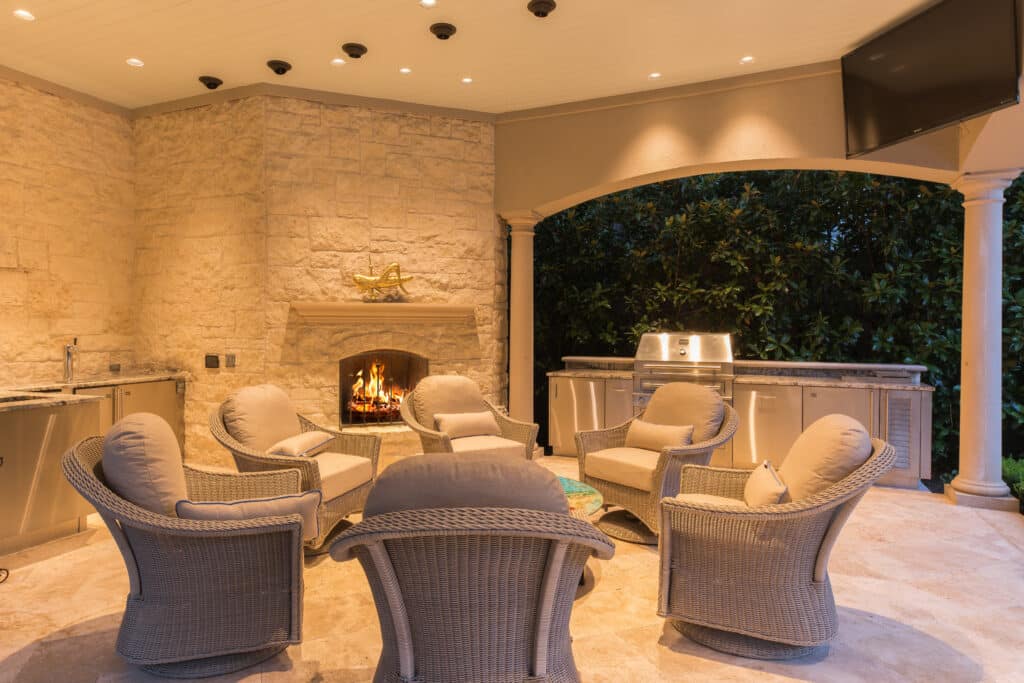
Seating Areas
Seating areas give guests a comfortable place to take in the scenery, transforming a garden into a true retreat. Stone benches, wrought iron chairs, or classic wooden seats not only add to the garden’s timeless appeal but also serve as inviting spots for relaxation. Carefully positioned within the garden, these seating options encourage visitors to stay, reflect, and appreciate the beauty around them.
Traditional Color Palette
The classic garden color palette is soft and understated, with whites, greens, and pastels that create a serene and cohesive atmosphere. Plants like lavender, hydrangeas, and boxwoods align well with this palette, adding elegance without overwhelming the space. This subtle color scheme allows the garden’s structure and design to shine, emphasizing form and texture over bold hues.
Classic Landscape Materials
Materials like stone, brick, and wrought iron play a crucial role in creating a cohesive, timeless aesthetic in classic garden design. These materials add a sense of permanence and strength, enhancing the overall feel of the garden. They’re not just functional—they’re key visual components that tie together the garden’s traditional look, helping it withstand the test of time both in style and durability.
Formal Layouts and Geometry
Geometry is at the heart of classic garden design, using shapes and structured layouts to create a sense of order and elegance. Circular patios, rectangular hedges, and evenly spaced plants all contribute to a formal layout that feels both welcoming and meticulously designed. This structured approach elevates the space, lending a sense of grandeur and refinement that feels instantly sophisticated.
Ornamental Structures and Gates
Decorative gates and arches are hallmarks of classic gardens, often marking entrances or framing vistas. They add a touch of old-world charm and invite guests into the garden as if entering a secret retreat.
These ornamental structures are usually crafted from wrought iron or stone, materials that enhance their aesthetic while withstanding the elements, preserving their beauty for years to come.
With extensive experience in designing classic garden landscapes, Harold Leidner Landscape Architects specializes in creating outdoor spaces that are not only aesthetically pleasing but also timeless. Whether you’re looking for a serene retreat or an elegant gathering place, our team crafts each garden to reflect the refined elegance that defines classic garden design.
Ready to transform your outdoor space with classic garden features? Discover what our clients have to say about our work in our testimonials.
Classic Landscape Elements: Essentials for a Refined Garden
Classic landscape elements add depth, structure, and timeless beauty to any garden. These features enhance the overall design, providing a mix of formality, charm, and elegance. Here’s a look at essential landscape elements that elevate traditional garden designs, making them both captivating and enduring.
Formal Flower Beds
Well-tended flower beds add vibrancy and color while maintaining the order that classic gardens are known for. Choices like roses, hydrangeas, and perennials provide color without compromising the structured feel.
To keep things practical, consider plant varieties that thrive in the Dallas-Fort Worth area, such as laurels, boxwoods, and evergreens, which complement the classic aesthetic while withstanding local climate conditions.
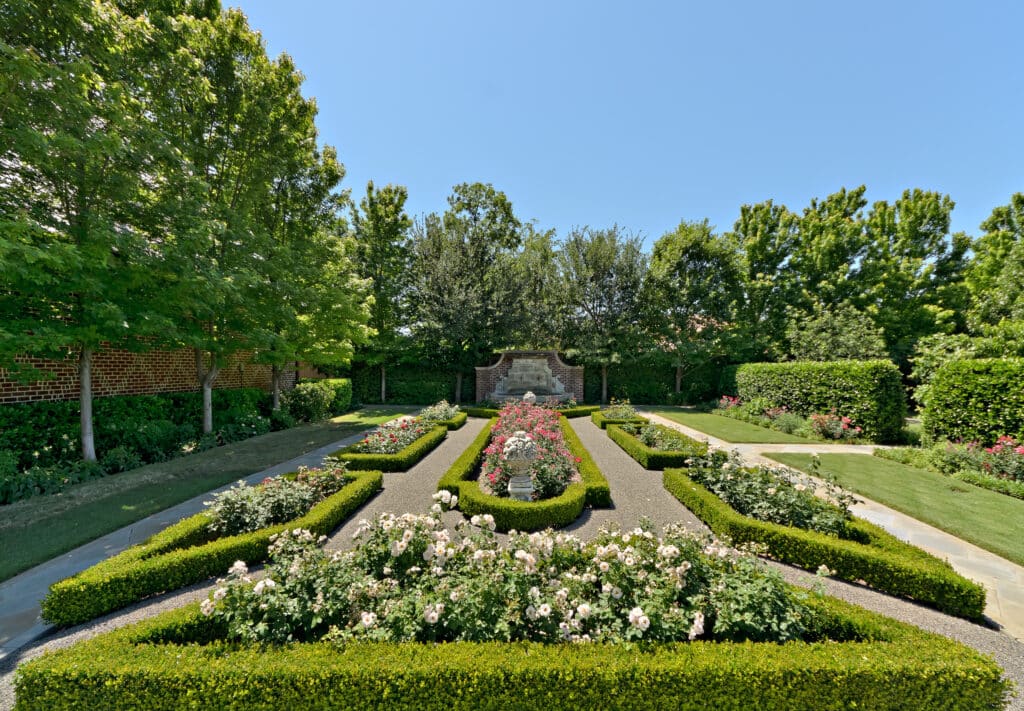
Cottage Gardens
Though they might seem informal, cottage gardens can bring warmth to classic layouts by mixing flowering plants, herbs, and shrubs. This cozy, inviting style contrasts with the structure of the surrounding garden, offering a natural charm.
When balanced with more formal elements, cottage gardens add texture and variety without disrupting the overall design.
Pergola-Covered Walkways
Pergolas create shaded walkways that feel like natural extensions of the home, often adorned with climbing plants like ivy or roses. Made from classic materials such as wood or metal, pergolas not only add visual interest but also blend seamlessly into the overall aesthetic, creating a lush and inviting passageway through the garden.
Traditional Water Features
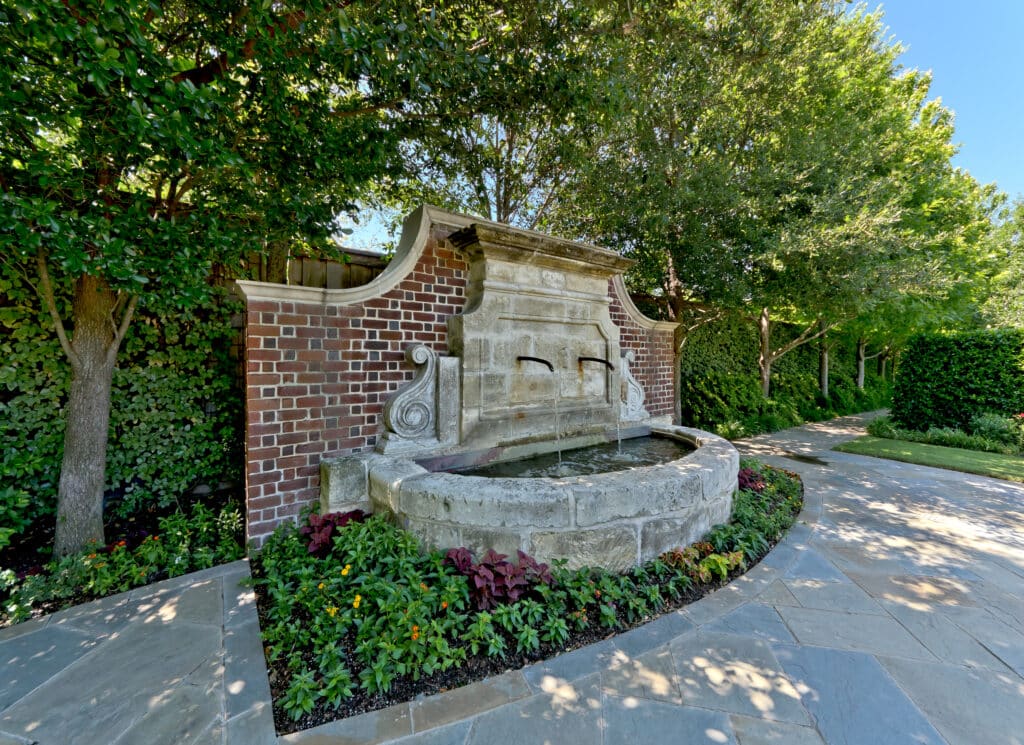
Water features like fountains or small ponds introduce tranquility, softening the garden’s layout and adding movement to an otherwise structured space. A gently trickling fountain or a reflective pond enhances the garden’s natural beauty while adding an auditory dimension that soothes and invites relaxation.
Arbors and Bird Baths
Adding arbors and bird baths brings vertical interest and encourages wildlife, making the garden feel more vibrant and alive. These timeless features enhance the sense of nostalgia, making any garden feel like a step back in time. Simple yet elegant, they add character and charm while blending with the classic design.
Statues and Sculptures
Strategically placed statues and sculptures can elevate the sophistication of a garden, acting as refined focal points. From cherubs and classical figures to abstract designs, these pieces add depth and character, creating an atmosphere of culture and history within the landscape.
Raised Garden Beds
Raised garden beds offer both functionality and beauty, adding depth and structure to the garden layout. Typically made from durable materials like wood or stone, these beds complement the traditional aesthetic while allowing for easy maintenance.
Raised beds are ideal for showcasing smaller plants, adding layers and visual interest, and creating defined spaces within the garden.
At Harold Leidner Landscape Architects, we integrate each of these design elements with precision and creativity, tailoring every garden to suit the homeowner’s vision and the Dallas-Fort Worth climate. Discover how these features come together in our project portfolio to create outdoor spaces that are both timeless and unique.
Classic Landscaping and Garden Design Experts
At Harold Leidner Landscape Architects, we bring 35 years of expertise to creating personalized classic gardens that embody the elegance and charm of traditional design. Our custom features reflect timeless aesthetics while adding unique touches tailored to your space.
Whether you’re drawn to symmetry, formal layouts, or serene water features, our team knows how to craft an outdoor haven that combines luxury with tranquility. For a more modern landscape with the same level of artistry, explore our modern garden design services.With a commitment to unmatched craftsmanship, quality, and attention to detail, Harold Leidner delivers gardens that are both stunning and enduring. Ready to bring your vision of a classic garden to life? Contact us today for a consultation and expert advice.